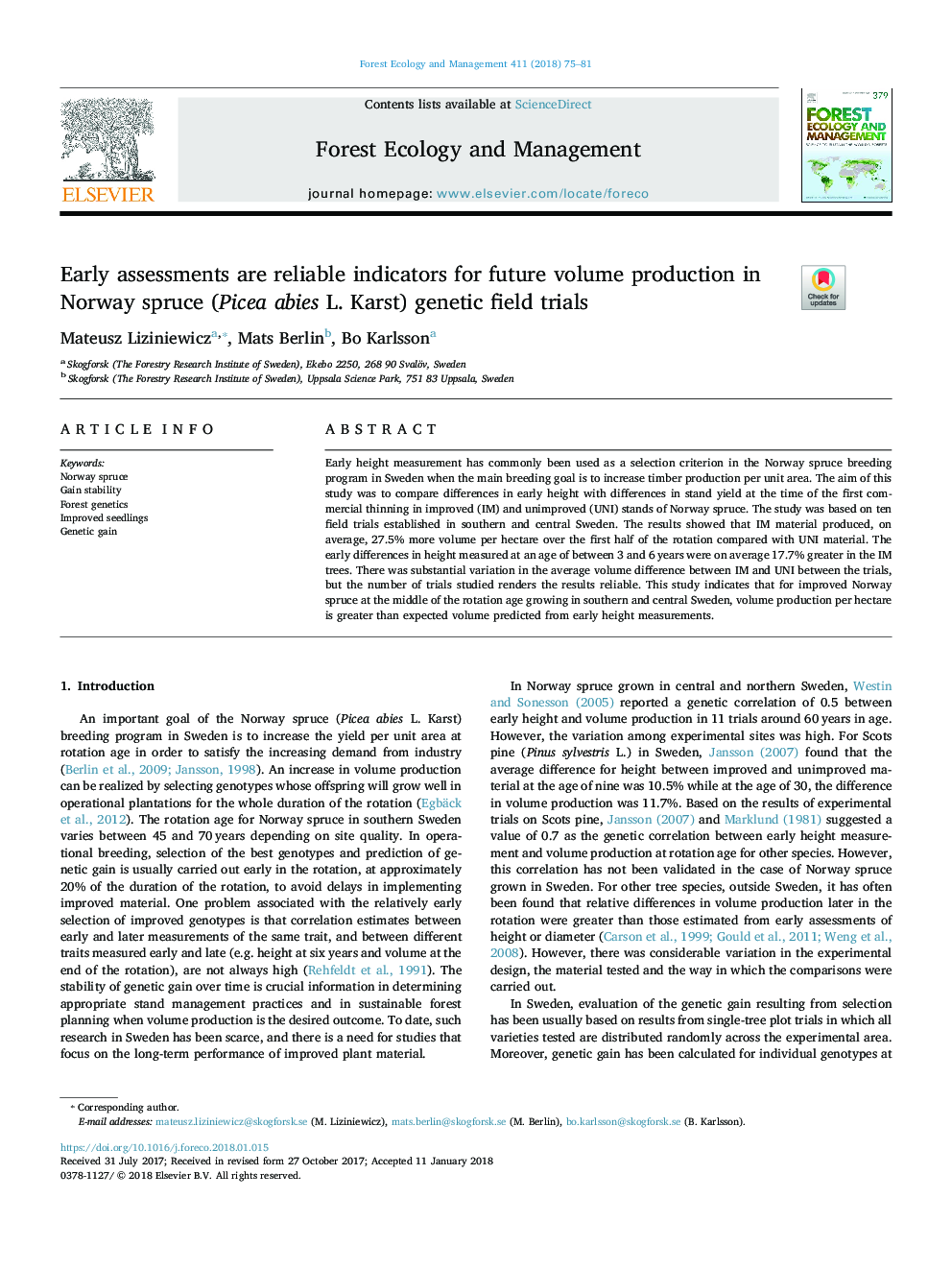| Article ID | Journal | Published Year | Pages | File Type |
|---|---|---|---|---|
| 6541820 | Forest Ecology and Management | 2018 | 7 Pages |
Abstract
Early height measurement has commonly been used as a selection criterion in the Norway spruce breeding program in Sweden when the main breeding goal is to increase timber production per unit area. The aim of this study was to compare differences in early height with differences in stand yield at the time of the first commercial thinning in improved (IM) and unimproved (UNI) stands of Norway spruce. The study was based on ten field trials established in southern and central Sweden. The results showed that IM material produced, on average, 27.5% more volume per hectare over the first half of the rotation compared with UNI material. The early differences in height measured at an age of between 3 and 6â¯years were on average 17.7% greater in the IM trees. There was substantial variation in the average volume difference between IM and UNI between the trials, but the number of trials studied renders the results reliable. This study indicates that for improved Norway spruce at the middle of the rotation age growing in southern and central Sweden, volume production per hectare is greater than expected volume predicted from early height measurements.
Related Topics
Life Sciences
Agricultural and Biological Sciences
Ecology, Evolution, Behavior and Systematics
Authors
Mateusz Liziniewicz, Mats Berlin, Bo Karlsson,
